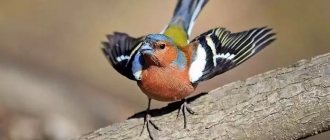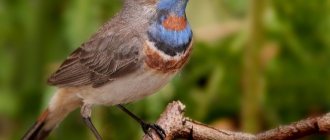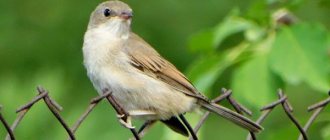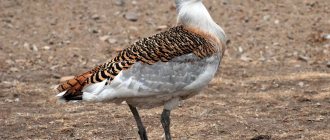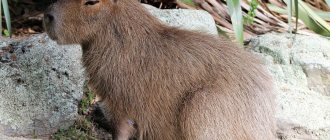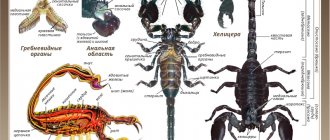Where does a hedgehog live and what does it eat? Such questions are not uncommon, because these cute animals are of interest to many.
Hedgehogs are animals of the chordate class of mammals of the order Urchiniformes of the family Urchinidae. The hedgehog has a body length from 10 to 44 cm (depending on the species), its weight can vary from 300 grams to one and a half kilograms. In addition, the animal has a tail ranging from 1 to 21 cm in length.
What does this animal look like?
The animal's large head is wedge-shaped. The muzzle is elongated, the nose is mobile, pointed and moist to the touch. A hedgehog's teeth are sharp and small. There are 20 of them on the upper jaw, and only 16 on the lower jaw. Certain species of hedgehogs have a different number of teeth - up to 44. The large first incisors vaguely resemble fangs.
The hedgehog's front legs are shorter than its hind legs. There are five fingers on each limb, except for the white-bellied hedgehog, which has four on its hind legs. Hedgehogs have long middle toes, which are used to clean their needles.
The hedgehog's spines are hollow formations, between which there is a growth of thin and sparse hairs, barely noticeable to the eye. The abdomen and head of the animal are covered with ordinary fur.
Subfamily Hedgehogs
The subfamily of hedgehogs (or true hedgehogs) unites hedgehogs in the usual sense. These are tightly built, small-sized, short-legged animals with a short tail. The entire surface of their back is covered with hairs (needles) modified to a hard state, mixed with regular fur. Just under the skin of hedgehogs there are muscles, when contracted, the animals can curl up into a ball in case of danger.
Representatives of this subfamily are distributed in Africa, Europe and southern Asia. They were brought to New Zealand specifically. They are not found at all in North and South America, Australia and Madagascar.
Genus African hedgehogs
White-bellied hedgehog
Algerian hedgehog
South African hedgehog
Somali hedgehog
Genus Eurasian hedgehogs
Amur hedgehog
Eastern European hedgehog
collared hedgehog
Genus Steppe hedgehogs
Daurian hedgehog
Chinese hedgehog
Genus Long-spined hedgehogs
Ethiopian hedgehog
Dark-spined hedgehog (Bald hedgehog or long-spined hedgehog)
Indian hedgehog
The main thing is needles!
The average number of needles on each hedgehog is up to 10,000, and their constant growth and renewal occurs. They are mostly dark in color, sometimes alternating with stripes of a lighter shade.
Depending on the species, a hedgehog can be brown, black, brown, sandy or even white in color. In some places, white and black colors alternate with the formation of spots. Most hedgehogs have well-developed subcutaneous muscles. A characteristic feature of these animals is to curl up into a ball when encountering danger. It is for this purpose that developed subcutaneous muscles are needed, which are located along the line of spine growth.
The hedgehog is a nocturnal animal with poor vision. As compensation, nature endowed him with excellent sense of smell and hearing. This animal cannot be called agile. The hedgehog usually runs away at an average speed of no more than 3-4 km per hour. The hedgehog is a land animal, but most of its species can swim well.
The natural lifespan of a hedgehog is about 3-5 years. If you place a hedgehog in a home environment, then in the absence of natural enemies it can live up to 8-10 years. In nature, its life is shorter. In the forest where the hedgehog lives, he becomes the object of hunting by foxes, wolves, owls, badgers, ferrets, mongooses, jackals, hyenas, eagles and many other predators. And even in the conditions of, for example, a city park, his life is full of dangers.
Hedgehog lifestyle
Hedgehogs are predominantly nocturnal. They usually make burrows in bushes and tree roots. There are known cases when animals occupied ready-made burrows of other forest inhabitants.
The hedgehog leads a solitary lifestyle and does not stray far from its burrow. Males protect their territory from invasion by other males. Animals meet with representatives of the opposite sex only for the purpose of reproduction.
As a rule, animals sleep in their burrows during the day and go hunting at night. At the same time, it is not uncommon to see hedgehogs in nature during daylight hours.
Where do hedgehogs live in summer and winter?
Their habitat can be considered quite wide. These small prickly animals can be found in any European country; they are found in abundance both in Russia and in much hotter Africa. Hedgehogs also live in the Middle East, New Zealand and Asia.
The places where the hedgehog lives in nature are deserts, forests, steppes, and cultivated landscapes. Even urban areas are no exception. When setting up a home, he digs a hole under the roots of a tree or in the bushes. Sometimes you can find an abandoned rodent hole where a hedgehog lived.
Population and species status
Photo: Common hedgehog in Russia
The distribution area of the common hedgehog is quite extensive, hedgehogs inhabit various landscapes, even being found in large cities, but, nevertheless, they are considered forest dwellers, loving the edges and woodlands. Regarding the size of the hedgehog population, the situation is not favorable everywhere; in many regions, a decrease in the number of prickly hedgehogs has been noticed; in some places where hedgehogs were often found before, they have become very rare and a curiosity, which is very worrying for environmental organizations.
The main reasons for the decline in the number of hedgehogs are a number of anthropogenic factors: deforestation, construction of new highways, urban sprawl, human intervention in natural biotopes and their isolation and fragmentation, destruction of natural hedgehog shelters, lack of food as a result of landscape cultivation and annual spring fires, pollution the natural environment as a whole.
All of the above negative trends affect the size of the hedgehog population, which is steadily and gradually declining. On the territory of our country, in some regions, the common hedgehog is included in the regional Red Data Books as a rare species with an ever-decreasing number. So, the prickly forest dweller needs certain protective measures.
Hedgehog lifestyle
The hedgehog by nature itself is conceived as a solitary nocturnal animal, whose lifestyle is rather secretive. Usually in the mink where the hedgehog lives (its length can reach 1 meter), he sleeps throughout the day. Those populations that live in foothill areas can hide in voids under stones and crevices between rocks.
In the area near the burrows where hedgehogs live, they go out to hunt at night in the summer. Unfortunately, according to statistics, a very large number of them die under the wheels of cars when trying to cross roads in the dark.
Natural enemies of common hedgehogs
Photo: Common hedgehog in nature
The hedgehog itself is peaceful, but it has plenty of enemies in the wild. Of course, inexperienced young animals are most vulnerable.
Among the hedgehogs' enemies we can list:
- ferrets;
- foxes;
- badgers;
- feathered predators (owls, eagle owls, eagles);
- martens;
- snake.
The hedgehog is not so simple, he has his own methods of protection, it is not for nothing that he is covered with thorny armor, which often saves his life. Seeing an ill-wisher, the hedgehog jumps on him, trying to inject him, and then quickly transforms into a prickly ball. Predators, having pricked the paws and muzzle, often retreat, losing interest in the hedgehog.
The hedgehog also has sophisticated enemies who know clever maneuvers to outwit the prickly one. An eagle owl always catches a hedgehog unexpectedly; it sneaks up on it without making any sounds, which confuses the animal. Cunning foxes try to drive the hedgehog into the water, where it has no opportunity to curl up into a ball, which makes it defenseless against the enemy.
When a snake attacks a hedgehog, most often the snake suffers, and the hedgehog wins. The prickly one is not afraid of poisonous bites, because toxins have practically no effect on it. Having grabbed the reptile, the hedgehog curls up into a ball, slowly wrapping the snake around itself, causing the crawling creature to die.
One of the enemies of hedgehogs can also be considered a person who, through his vigorous activity, harms many animals. Although hedgehogs are able to live in cities, many animals die under the wheels of cars when crossing the highway. Of course, no one specifically hunts the hedgehog, although in ancient times the Romans used hedgehog skins to comb sheep. Now the hedgehog is suffering due to the fact that people are displacing it from its permanent places of residence, invading natural biotopes and worsening the ecological situation as a whole.
Interesting fact: At the beginning of the last century, a large number of hedgehogs died due to the fast food chain McDonalds. The size of the ice cream cups was narrow, and the prickly ones feasted on the remains of the sweet near the bins, sticking their heads into the glasses and becoming trapped. After demonstrations and protests by animal rights activists, the restaurant had to expand the diameter of the cups.
What do hedgehogs eat in the wild?
They are omnivores. Their diet consists of insects, spiders, beetles, earwigs, caterpillars, slugs, earthworms and woodlice. The hedgehog will not refuse to try a toad, locust, crustacean or bird eggs. The population of hedgehogs living in the north readily eats small rodents (mice, etc.), as well as frogs and lizards.
Representatives of hedgehogs are quite resistant to any poison, even very toxic ones. That is why hedgehogs easily deal with scorpions and poisonous snakes. They will not even refuse carrion or found food waste.
Forest hedgehogs eat moss, mushrooms, acorns, cereal seeds and any berries - raspberries, blackberries, strawberries - as plant food. The hedgehog's task is to fatten up properly during the summer, otherwise the animal will not be able to survive during hibernation. Having accumulated a good supply of fat, the hedgehog enters a state of suspended animation during the period from October to April.
The benefits and harms of hedgehogs
The hedgehog easily adapts to life next to a person and is very often kept as a pet.
Even the Romans in the 4th century. BC e. They raised hedgehogs for meat; they baked them in clay along with needles. Hedgehog skins were widely used for leather. The common hedgehog is useful in exterminating harmful insects and harmful in that it eats chicks and eggs of birds that nest on the ground.
Also, this prickly animal can be a carrier of diseases such as salmonellosis, fever, rabies. There are large numbers of fleas and ticks on their skin. The study of ticks has proven that hedgehogs are fed by ticks in all phases of their development. The hedgehog is unable to get rid of ticks that have climbed between the needles.
How do hedgehogs reproduce?
Their mating season begins at the end of hibernation, when the air temperature reaches 18-20 degrees. Sexual maturity in each animal begins at the age of 10-12 months. Hedgehog populations living in the north reproduce once a year. Inhabitants of the southern regions - twice.
The nest for the offspring is made by the female in the hole where the hedgehog lives, by lining it with grass and dry leaves. Fights for the female are not uncommon between males. Hedgehog massacres are accompanied by snorting, snorting, biting and pricking with sharp needles. Before mating, the female tries to smooth out her numerous spines. Hedgehogs are polygamous animals; they are not characterized by the formation of strong families.
The female hedgehog bears the offspring for a period of time, which, depending on the species, can range from 34 to 58 days. As a result, in the hole where the hedgehog lived, cubs number from 1 to 7 (most often there are 4). The weight of a newborn hedgehog is about 5 grams; they are born blind and naked, covered with bright pink skin.
During the first day of life, the body of a newborn hedgehog is covered with soft small needles. After two weeks, the needle-like cover of these animals is completely formed. The female feeds the cubs with milk during the first month, then a period of independent existence begins for the young animals.
Subfamily Gimnuraceae (Rat hedgehogs)
Representatives of this subfamily are not at all similar in appearance to real hedgehogs. They resemble rats, which is why they are called rat hedgehogs.
The body of the gymnurids is more elongated, and the large head makes up a third of its length. Gymnuridae do not have spines; the surface of their body is covered with hair. The length of the gymnura can be up to 45 cm. Their tail is long with sparse short hairs. They protect themselves from enemies by emitting an unpleasant onion-garlic odor. They swim well, thanks to which they can diversify their menu with aquatic inhabitants. They live mainly in Southeast Asia.
Gymnura clan
Ordinary gymnura
Genus Small Gymnura
Small gymnura
About certain types of hedgehogs
The entire hedgehog family can be divided into two different subfamilies - true hedgehogs and rat hedgehogs. In total, these animals exist in 7 genera and 23 species. Let's talk briefly about some of their interesting representatives.
1. The most common type of hedgehog is the common or European hedgehog with a body length of about 20-30 cm and a small tail up to 3 cm in size. It weighs about 800 g, and the needles are about 3 cm in size.
The color of such a hedgehog is brownish-brownish with dark crossbars. Where does the common hedgehog live in nature? Representatives of this species are typical inhabitants of plains, parks and woodlands in the countries of Europe, Russia and Kazakhstan. In autumn or spring, hedgehogs slowly shed, replacing approximately a third of all needles.
2. The so-called long-eared hedgehog is distinguished by long ears that grow up to 5 centimeters in size. The representatives of the species themselves are quite small, measuring from 12 to 20 cm in length and weighing about 430 g. The needles of the long-eared hedgehog are short - measuring from 1.7 to 1.9 cm. They are found in dry steppes and semi-deserts, where they try to gather near water sources . The territory where this species of hedgehog lives includes Africa and Asia, Kazakhstan, India, China and Mongolia. In Russia, the long-eared hedgehog can be found in the Volga region and Ural mountains.
3. Eastern European hedgehogs are similar in appearance to European ones, but have lighter fur on the belly and neck compared to the sides and head. An adult can grow up to 35 cm in length, and the weight of a hedgehog over the summer can reach 1.2 kg.
They are found in Germany, Austria and Slovenia, in Kazakhstan and the Urals, as well as on the Mediterranean islands. Their habitat can be very different - parks, copses, garden plots and even river valleys.
4. African dwarf (or white-bellied) hedgehogs are from 15 to 22 cm in length. Their weight is only 350-700 g. With a brown and gray color, the needles of these hedgehogs are white at the tips. All hedgehogs usually snort quietly, but the African hedgehog can make quite loud sounds when in danger. As the name suggests, African hedgehogs live south of the Sahara Desert - in Nigeria, Sudan, Senegal, Ethiopia and Mauritania.
Origin of the species and description
Photo: Common hedgehog
The common hedgehog is also called the European hedgehog - it is a mammal from the hedgehog family, belonging to the genus of Eurasian (forest) hedgehogs and the order of insectivores. The genus of forest hedgehogs in Latin sounds like “Erinaceus”, which means “thorny barrier”. The hedgehog family has 24 species, grouped into 10 genera. Hedgehogs can be called very ancient animals, because their spiny family has existed since the Paleocene, which means hedgehogs existed many millions of years ago.
Representatives of three hedgehog genera live on the territory of our country:
- Eurasian (forest) hedgehogs, represented by common, Amur, Danube (southern) hedgehogs;
- eared hedgehogs, a species of eared hedgehog of the same genus lives in Russia;
- steppe hedgehogs, of which the Daurian hedgehog has chosen the territory of our state.
The common or Eurasian hedgehog is the most common and is familiar to many, because it is found even on the evening streets of cities. Its dimensions are small, the length of its body varies from 20 to 30 cm, and the hedgehog weighs from 700 to 800 grams. Of course, the main characteristic feature of a hedgehog is its spines, which cover the entire upper part and sides of the animal. Because of them, many people think that the porcupine is a close relative of the hedgehog; this is completely wrong. The hedgehog is much closer and dearer than shrews, moles, gymnurs (rat hedgehogs) and tenrecs. So, not everything that pricks is related to the hedgehog family.
Interesting fact: Few people know that the number of spines covering a mature hedgehog ranges from 5 to 6 thousand, while on a young hedgehog they can be counted about three thousand.
Hedgehogs as pets: features of care and maintenance
A variety of pets are popular these days. Hedgehogs are no exception. But the option of catching a wild animal in the forest and bringing it home is not the best solution. In nature, wild hedgehogs can be carriers of one of the dangerous diseases - ringworm, salmonellosis, hemorrhagic fever and even rabies. In addition, they almost always have ticks and fleas.
Therefore, if you decide to get a pet hedgehog, it is best to contact a trusted breeder who guarantees a healthy pet with good heredity, adapted to living conditions in captivity.
Range and habitat
The habitat of the European hedgehog is quite wide; it lives:
- in the European part of Russia;
- in Western Siberia;
- Kazakhstan;
- Western and Central Europe;
- in southern Scandinavia;
- in New Zealand;
- Asia Minor;
- on the British islands;
- in northern and northeastern China.
Hedgehogs prefer to settle on the edges, in deciduous mixed forests, copses, grassy plains, and in clearings with dense thickets of grass and shrubs. They also inhabit steppes and deserts, and river floodplains. Hedgehogs avoid swampy areas and dense coniferous forests.
Hedgehogs also often live near human settlements: in parks, squares, garden plots, and fields with thick grass. They often come out to humans due to lack of food, unfavorable conditions, or fires.
Gardeners often feed the prickly guest and install a hedgehog house on the site. A wild hedgehog is quite easy to tame. A tamed and fed hedgehog settles on the site and can live for several years.
It is worth knowing that hedgehogs can be dangerous to both humans and pets. Hedgehogs are carriers of many diseases, including rabies.
If you meet a hedgehog in the morning or afternoon, when the sun is still high, you should be wary of such an animal. This is often the first sign that the animal may be sick. Also, hedgehog quills are very dangerous.
In addition to the fact that they can be painfully scratched, many parasites live among the spines on a hedgehog’s body, from fleas to ticks. A hedgehog, making its way through the thick grass, brushes off all the parasites on its body. Therefore, it is not worth taking a wild hedgehog for home keeping.
In nature, hedgehogs rarely build nests or dig holes. They are lazy and arrogant animals. Hedgehogs have rather short legs, which make it difficult to dig a hole, so they often occupy other people's holes. They line the bottom with dry grass and leaves, and then trample the surface.
Hedgehogs also often build nests in thick grass and bushes, live in deep holes and between thick tree roots.
How to take care of your hedgehog
Keeping a hedgehog at home is not particularly difficult. The animal needs to be provided with decent housing - a fairly spacious cage made of wood or metal with a tray. The bottom of the cage where the hedgehog lives should always be filled with straw or fresh sawdust. There should also be bowls with water and food in it.
If you let your pet hedgehog out for a walk around the apartment, keep an eye on it. There is a risk that your pet will get tangled in the wires, get hurt, or chew on some necessary item.
The hedgehog's cage needs to be cleaned of dirt every day to avoid an unpleasant odor. As already said, the hedgehog is a solitary animal. Therefore, when deciding to have two hedgehogs at the same time, make sure that each of them has a separate cage.
Because a hedgehog is a nocturnal animal, it can disturb you at night by snorting, puffing and rustling.
Interesting facts about hedgehogs
- Hedgehogs have increased resistance to various natural and synthetic poisons. Not only do they eat poisonous insects without harming themselves, but they are also able to withstand snake bites. It was experimentally established that the animal tolerates a dose of snake venom capable of killing 20 people. Hedgehogs are also resistant to arsenic, hydrocyanic acid, mercuric chloride and other potent toxic substances.
- If you find a hedgehog in your garden or in the park, you should not pick it up. It should be remembered that these cute animals are carriers of diseases, including those dangerous to human life. Animals can be carriers of rabies, ringworm, leptospirosis, and yellow fever. Ectoparasites that live on the body of hedgehogs can also be carriers of dangerous infections.
- Hedgehogs often roll on the ground and prick various fruits on their needles. For a long time it was believed that the animal carries the supplies collected in this way into its hole. In fact, the reasons for this behavior are the hedgehog’s desire to clean the thorns, which his short legs cannot reach. Fruit acid applied to the needles removes dirt and prevents the appearance of some parasites.
- The largest hedgehog in the world is a representative of the species of ordinary steppe hedgehogs. In spring, the weight of sexually mature males can reach 900 grams, and before wintering their weight increases by another 400-500 grams.
- September 7 is Hedgehog Day. The events that take place on this day are aimed at conveying information about the animal’s lifestyle and the need to protect it.
What does a hedgehog eat at home?
It should be fed with raw lean meat, finely chopped, fresh fish or boiled liver. Delicacies for hedgehogs include bloodworms, cockroaches, mealworms or crickets. Your pet will not refuse carrots or apples.
The question of whether it is possible to give a hedgehog milk interests many. It is better not to do this, since hedgehogs suffer from lactose intolerance and, in addition to indigestion in the animal, milk can be fatal. Also, you should not offer him prey in the form of worms, snails and slugs caught in the wild due to the possibility of transmitting dangerous parasites to your pet.
Dimensions
Below are the dimensions and maximum weight of some members of the family.
| Name | Body length, cm | Weight, g |
| Stepnoy | 35 | 1400 |
| Eastern European | 35 | 1200 |
| Amursky | 30 | 1000 |
| Somali | 20 | 600 |
| Indian | 17 | 500 |
| Collared | 14 | 300 |
When does your hedgehog hibernate?
How and where do hedgehogs live at home in winter? The future owner of a prickly pet should be aware that even domestic hedgehogs kept in captivity tend to hibernate. Although its duration will be shorter than in natural conditions. If this phase is canceled, the animals may die by spring. This does not apply only to the breed of hedgehogs called African dwarfs - it is not customary for them to hibernate.
In the autumn, the hedgehog requires increased feeding, this is when it accumulates fat reserves. In October and early November, you can observe a period of lethargy and torpor in him, which means the transition to hibernation. For her, the hedgehog should be allocated a secluded place in the house with a temperature of no more than 5 degrees Celsius, preferably somewhere in the attic, in a barn or on a loggia. If the temperature is higher, the hibernation process may not begin. The nest of a domestic hedgehog should be covered with sawdust, dry leaves, rags or straw.
Most hedgehogs in the forest
Many owners of summer cottages, country houses, or those living next to a forest plantation have noticed funny hedgehogs near their houses and in their gardens. These cute creatures love to eat insects that harm the crop.
They can be classified as simple and even tame animals. If a person treats a forest dweller with something tasty, for example, cat food or milk, a couple of times, he can get used to the person. Shows his trust by allowing himself to be stroked without releasing the needles.
The most favorite delicacies are:
slugs;- insect larvae;
- mice;
- lizards;
- frogs;
- snails;
- bees and wasps.
Hedgehogs are not afraid of reptiles. Even if their body is exposed to snake venom, they easily tolerate it. This fact is a unique property of these forest inhabitants.
Many people know hedgehogs from children's cartoons. Animators often add mushrooms and apples to the needles. This is supposedly how the animals get their food. Everything is different in life. Thus, the hedgehog cannot get food for itself. If this happens, it is most likely an accident. And fruits or vegetables that accidentally fall on the back with needles soon fall off.
Hedgehogs love to move at night . As soon as the sun has hidden and dusk has fallen, their whole family goes out in search of food. They easily succeed because hedgehogs have a keen sense of smell and excellent hearing. These animals can understand that a worm is crawling underground. Then the hedgehog easily digs a hole in the ground with his nails and takes out his food. But it’s hard to imagine how hedgehogs spend the winter, because there is no longer such an abundance of food.
Hedgehogs prepare for winter in advance
These forest dwellers are precisely the animals that prefer to hibernate in winter. The only exceptions are individuals living in houses. There are several reasons:
- extreme cold;
- lack of light food.
Even individuals living in hot sands hibernate, only in the summer. must eat well and gain subcutaneous fat before falling asleep . If this does not happen, they will not survive the severe cold.
How do hedgehogs winter? They hide in their homes, in burrows . To begin with, they equip them. After all, every mistake in preparing for winter costs the hedgehog his own life and the life of the entire family. Hedgehogs like to spend the winter in safe places where they will be warm and comfortable. For example, under outbuildings, in bushes or in a pile of branches. They cover their overnight shelter with leaves, staff it, and trample it. Even in a cold winter, the temperature in their home will not be less than 0 degrees.
We invite the forest inhabitants to come to us
If you want these wild animals to visit your site at least occasionally, you can take some actions. Tip #1 - bait. If you attract a hedgehog with food, he will not forget it for a long time, because he is such a glutton. Some facts to note:
- hedgehogs are easily tamed;
- omnivorous;
- quickly get used to a person.
Of course, the first contact with a hedgehog may not be successful. Until the animals recognize your intentions, you will not be able to tame them. At first, they can behave quite aggressively - snort, puff, hiss and puff, and if possible, run away. But as soon as they understand that you do not wish them harm, they will change their anger to mercy.


